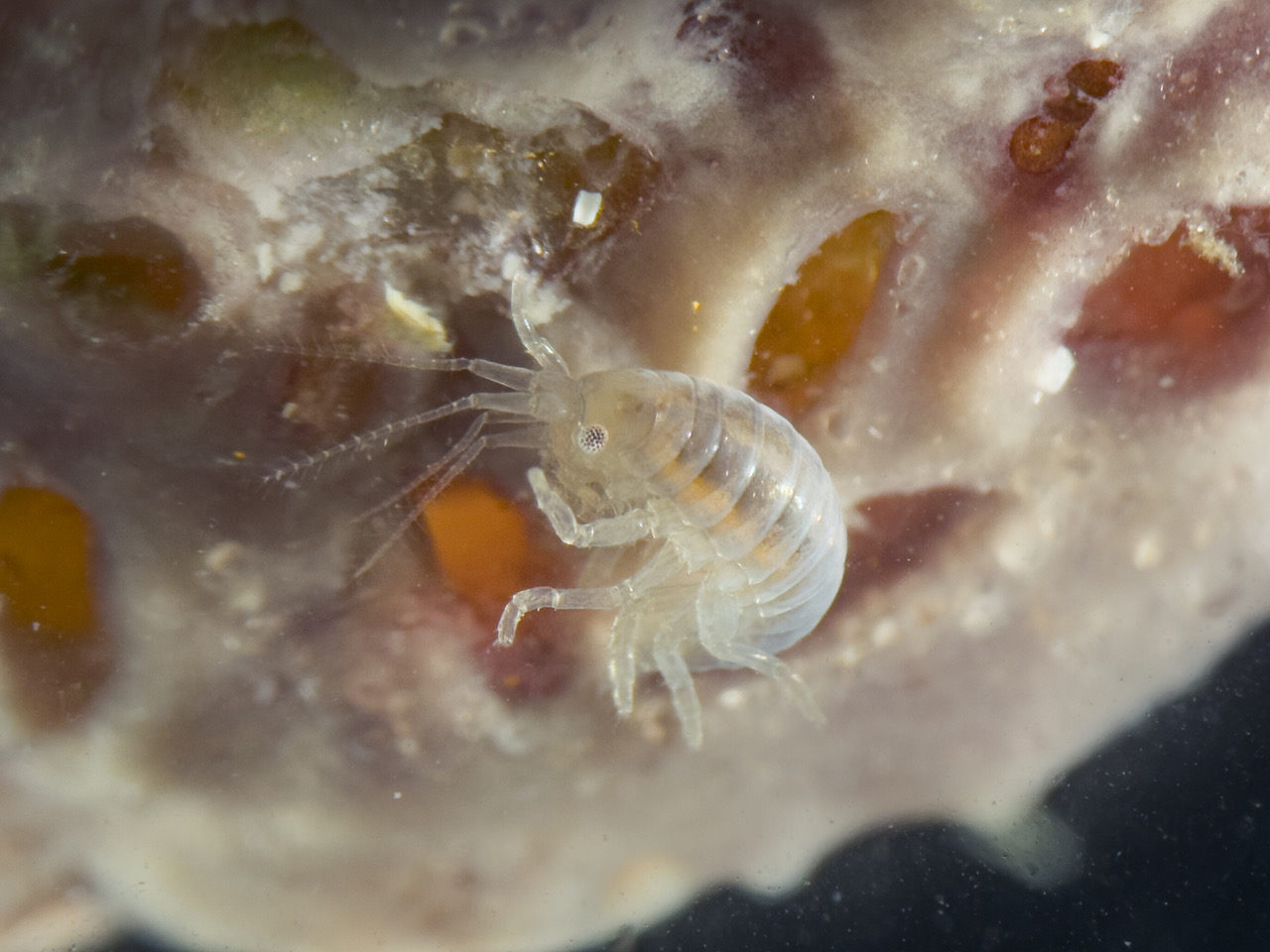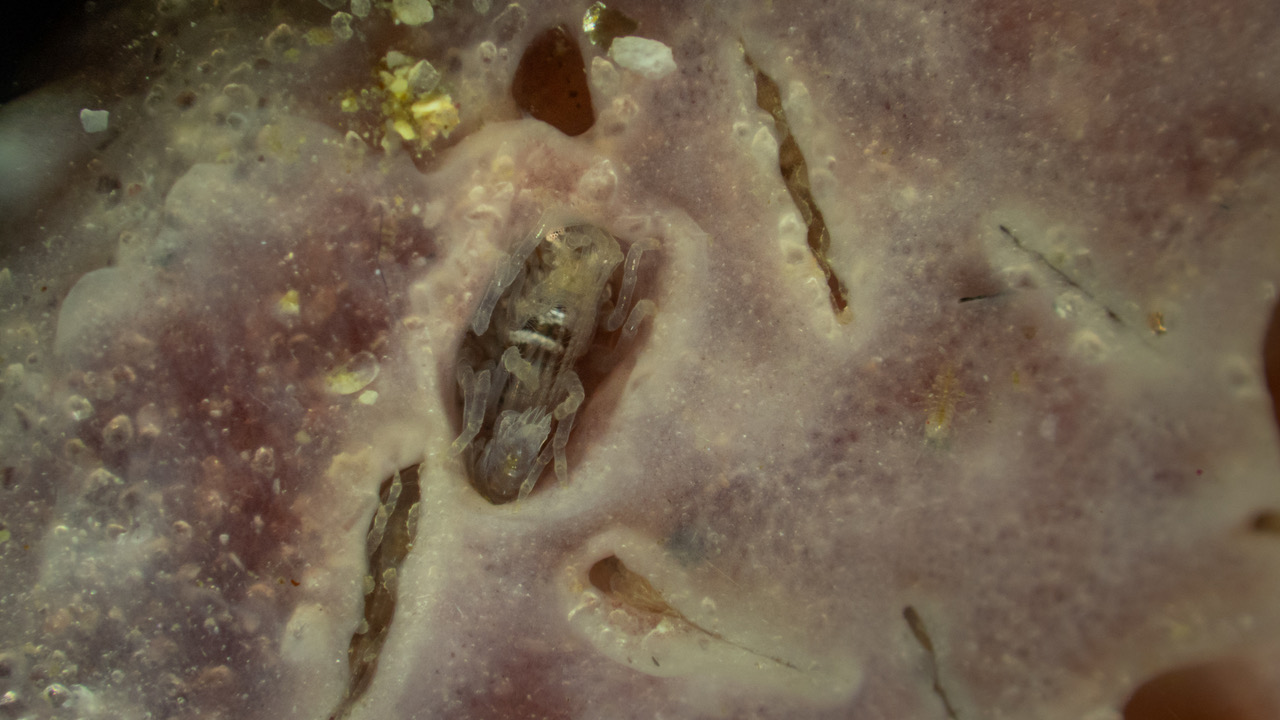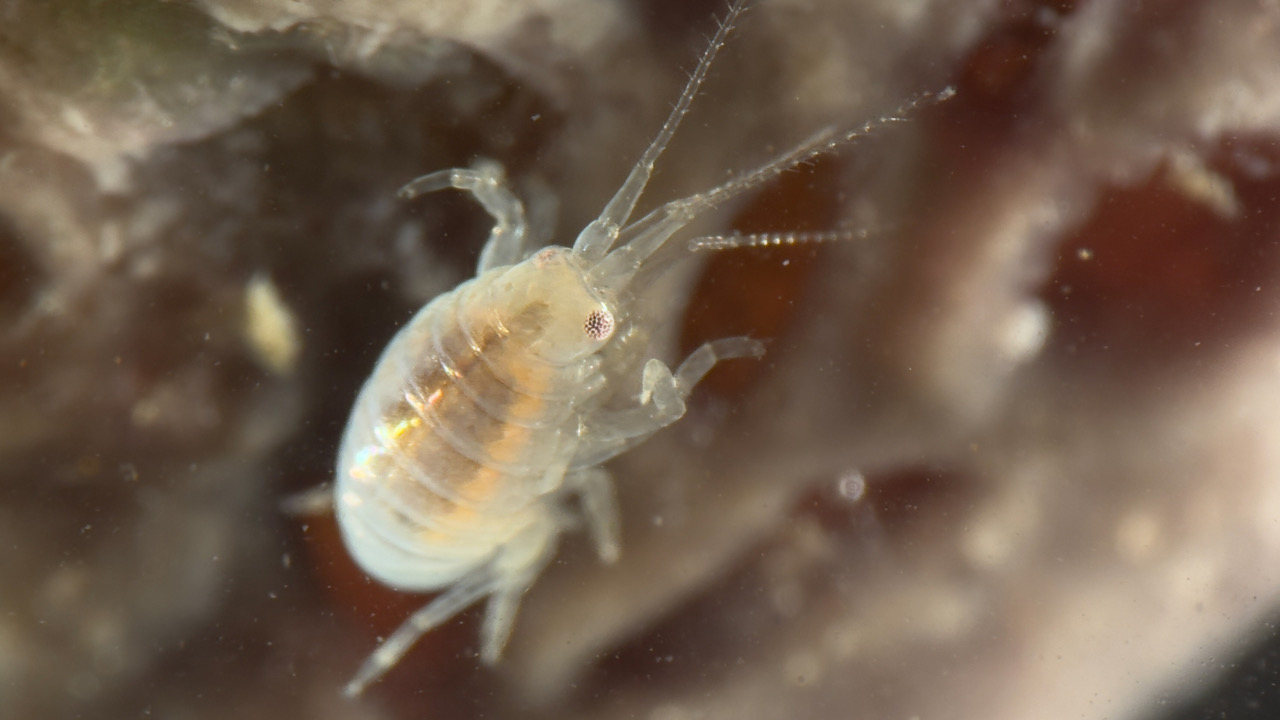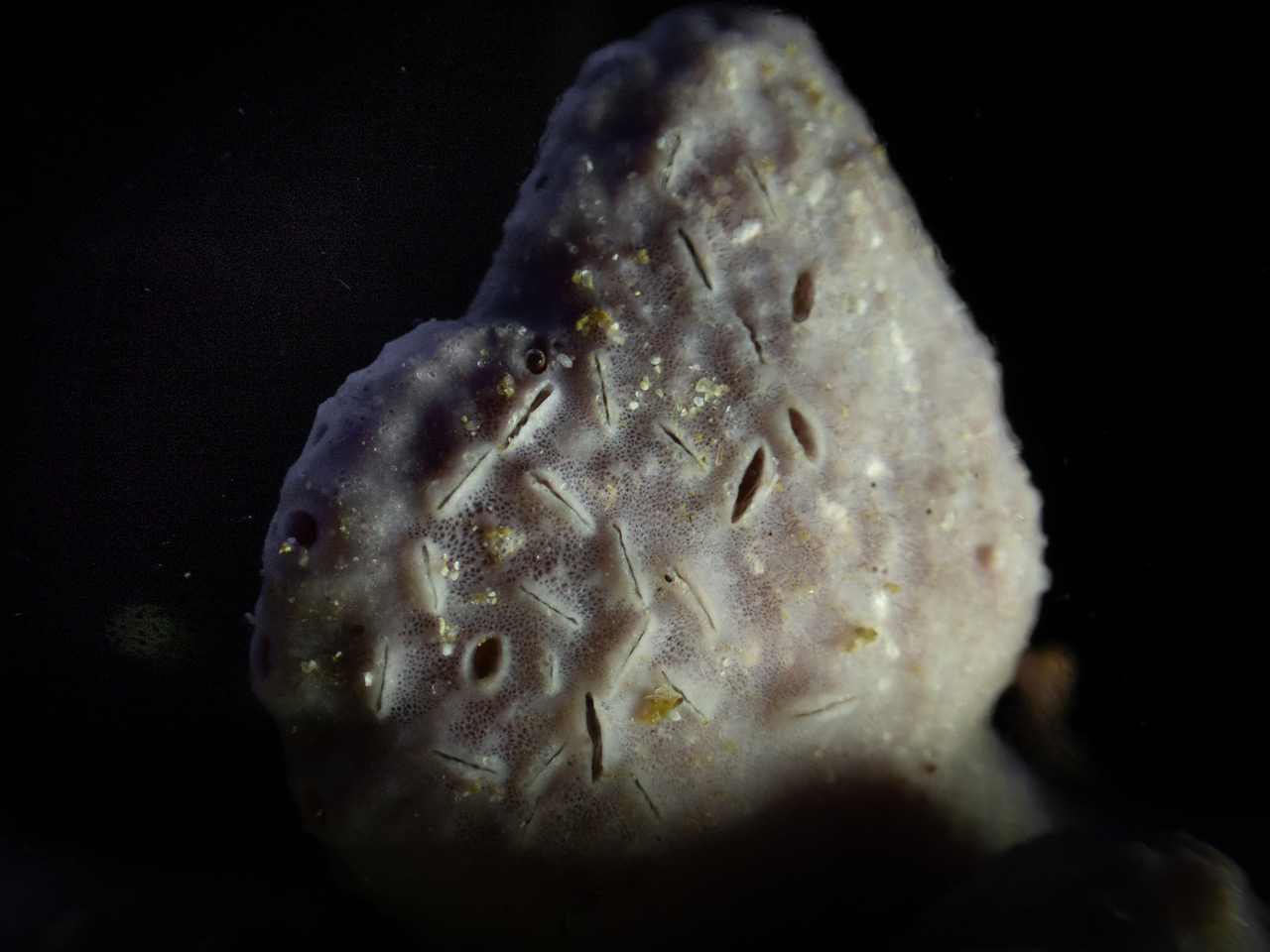Two creatures turning our thinking upside-down: part 1
One late afternoon, torch in hand, a friend and I pottered around in the shallows looking for tiny critters. I saw a strange pattern on a blueish sponge: small slits on the surface, with animal feelers sticking out of them. An Upside-down amphipod (Policheria atolli)!

An amphipod (Policheria atolli) found hidden in a marine sponge. Photo © Jannes Landschoff
What was unusual about this sighting was that colonies of these delicate, 5mm-long creatures are usually seen on the body walls of ascidians, which are sessile organisms that grow on rocks. However, these ones were living on the sponge, each amphipod lying upside-down in an excavation on the surface. To protect themselves from predators, these little creatures have nippers on the end of their legs, which can be used to pull their burrows closed – a bit like drawing a curtain. Other specialised legs pump water through the burrow and capture food.

An amphipod (Policheria atolli) in an excavated burrow on the surface of a sponge. Photo © Jannes Landschoff
I’m not sure if this is harmful to the sponge, or if the amphipods may even be beneficial in some way, such as defending the surface from other intruders or sponge-eating animals. What I do know is that the accumulation of little animals such as the Upside-down amphipod keeps an ecosystem healthy and functioning.

An amphipod (Policheria atolli) found hidden in a marine sponge. Photo © Jannes Landschoff
Biodiversity is so important. After learning that these organisms also live in sponges, I can’t help but wonder if they are the same species as the ones living on the ascidians. Our foundational, taxonomic scientific knowledge of species in South African marine systems is still limited, so it’s always possible that there are many more than just one species.

A sponge with amphipods (Policheria atolli) living on the surface. Photo © Jannes Landschoff
Learn more about our 1001 Seaforest Species project here.
